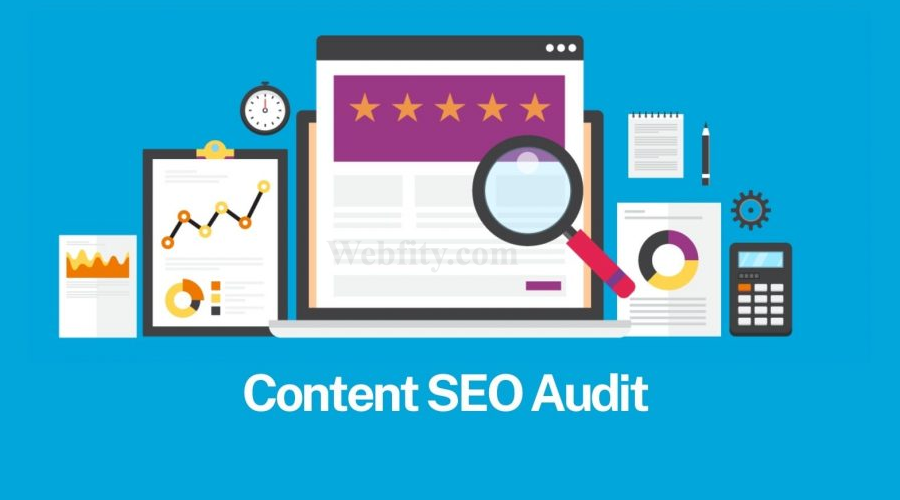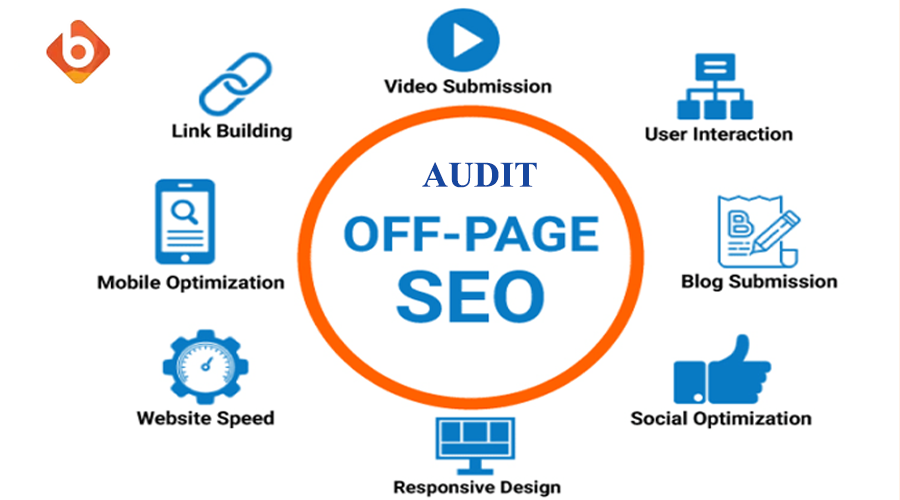SEO audits are periodic assessments of a website’s SEO performance, identifying strengths, weaknesses, opportunities and threats.SEO audits can help website owners and marketers to:
- Understand how their website is performing in terms of traffic, rankings, conversions and user experience
- Identify and fix technical issues that may affect their website’s crawlability, indexability and usability
- Analyze and optimize their website’s content, structure, keywords and metadata
- Evaluate and improve their website’s authority, trustworthiness and reputation
- Discover and leverage new opportunities for growth and improvement
In this article, we will provide a comprehensive SEO audit checklist that covers the essential aspects of a website’s SEO performance. We will also provide some tips and tools to help you conduct your own SEO audit and improve your website’s performance.
1. Technical SEO Audit
The first step of an SEO audit is to check the technical aspects of your website that may affect its performance in search engines. Technical SEO refers to the optimization of your website’s infrastructure, such as its speed, security, mobile-friendliness and accessibility. Technical SEO issues can prevent your website from being crawled, indexed and ranked by search engines, or from providing a good user experience to your visitors.

Some of the technical SEO factors that you should check include:
Site speed: Site speed is a ranking factor for both desktop and mobile searches, as well as a key factor for user satisfaction and retention. A slow-loading website can frustrate your visitors and increase your bounce rate. To check your site speed, you can use tools such as Google PageSpeed Insights, GTmetrix or Pingdom. These tools will measure your site speed and provide suggestions on how to improve it. Some common ways to improve your site speed include:
- Minifying your HTML, CSS and JavaScript files
- Optimizing your images and videos
- Enabling compression and caching
- Using a content delivery network (CDN)
- Reducing the number of redirects and external requests
Security: Security is another ranking factor for search engines, as well as a trust signal for users. A secure website uses HTTPS protocol, which encrypts the data exchanged between your server and your visitors’ browsers. HTTPS also protects your website from malicious attacks, such as phishing, malware or data breaches. To check your site security, you can use tools such as SSL Labs or Why No Padlock. These tools will scan your website for any security issues and provide recommendations on how to fix them. Some common ways to improve your site security include:
- Obtaining an SSL certificate from a reputable provider
- Updating your software and plugins regularly
- Using strong passwords and two-factor authentication
- Implementing a firewall and malware scanner
- Avoiding insecure or outdated plugins or themes
Mobile-friendliness: Mobile-friendliness is another ranking factor for search engines, especially since Google switched to mobile-first indexing in 2018. Mobile-first indexing means that Google uses the mobile version of your website as the primary source for ranking and indexing purposes. Therefore, it is crucial that your website is responsive and adapts to different screen sizes and devices. To check your site mobile-friendliness, you can use tools such as Google Mobile-Friendly Test or Bing Mobile Friendliness Test Tool. These tools will evaluate your website’s mobile usability and provide suggestions on how to improve it. Some common ways to improve your site mobile-friendliness include:
- Using a responsive design or a separate mobile version
- Avoiding flash or other incompatible elements
- Using legible fonts and sizes
- Optimizing your layout and navigation
- Reducing pop-ups and intrusive ads
Accessibility: Accessibility is the practice of making your website accessible to all users, regardless of their abilities or disabilities. Accessibility is not only a moral obligation but also a legal requirement in some countries. Moreover, accessibility can also benefit your SEO performance by making your website more user-friendly and compatible with different devices and browsers. To check your site accessibility, you can use tools such as WAVE or AChecker. These tools will scan your website for any accessibility issues and provide guidelines on how to fix them. Some common ways to improve your site accessibility include:
- Using descriptive alt text for images and videos
- Providing captions and transcripts for audio and video content
- Using headings, lists and tables to structure your content
- Using contrast colors and clear fonts
- Providing keyboard navigation and skip links
2. Content SEO Audit
The second step of an SEO audit is to check the content aspects of your website that may affect its performance in search engines. Content SEO refers to the optimization of your website’s content, such as its quality, relevance, keywords and metadata. Content SEO issues can prevent your website from ranking for the right keywords, attracting the right audience and converting them into customers.

Some of the content SEO factors that you should check include:
Quality: Quality is one of the most important factors for SEO, as well as for user satisfaction and retention. Quality content is original, informative, engaging and useful for your target audience. Quality content also follows the E-A-T principle, which stands for Expertise, Authoritativeness and Trustworthiness. To check your content quality, you can use tools such as Copyscape or Grammarly. These tools will help you detect any plagiarism or grammar issues in your content. Some common ways to improve your content quality include:
- Conducting thorough research and citing credible sources
- Writing in a clear, concise and compelling way
- Adding value and solving problems for your audience
- Providing examples, statistics and testimonials
- Updating your content regularly and removing outdated information
Relevance: Relevance is another key factor for SEO, as it determines how well your content matches the search intent and expectations of your audience. Relevance content is aligned with your niche, topic and audience. Relevance content also follows the search intent, which is the goal or purpose behind a search query. There are four main types of search intent: informational, navigational, transactional and commercial. To check your content relevance, you can use tools such as Google Search Console or Google Analytics. These tools will help you analyze your traffic sources, keywords and user behavior on your website. Some common ways to improve your content relevance include:
- Conducting keyword research and using relevant keywords in your content
- Creating different types of content for different stages of the buyer’s journey
- Optimizing your title tags, headings and meta descriptions
- Using internal and external links to provide additional information
- Segmenting your audience and personalizing your content
Keywords: Keywords are the words and phrases that users type into search engines to find what they are looking for. Keywords are essential for SEO, as they help search engines understand what your content is about and rank it accordingly. Keywords also help users find your content and click on it. To check your keyword performance, you can use tools such as Google Keyword Planner or SEMrush. These tools will help you discover new keyword opportunities, analyze their difficulty and competition, and track their rankings and traffic. Some common ways to optimize your keywords include:
- Using long-tail keywords that are more specific and less competitive
- Using LSI keywords that are semantically related to your main keywords
- Using modifiers and variations of your keywords to capture different intents
- Using keywords naturally and strategically in your content
- Avoiding keyword stuffing or over-optimization
- Website Builder with Unlimited Storage Space: A Dream Come True for Content Creators
Metadata: Metadata are the snippets of information that appear in search engine results pages (SERPs) and describe what your content is about. Metadata include title tags, meta descriptions and URL slugs. Metadata are important for SEO, as they help search engines index and rank your content. Metadata also help users decide whether to click on your content or not. To check your metadata performance, you can use tools such as Screaming Frog or MozBar. These tools will help you audit your metadata across your website and identify any issues or missing elements. Some common ways to optimize your metadata include:
- Writing unique and descriptive title tags that include your main keyword
- Writing enticing and informative meta descriptions that include a call-to-action
- Using short and descriptive URL slugs that include your main keyword
- Using schema markup to add structured data to your metadata
- Testing and optimizing your metadata for click-through rate (CTR)
3. Off-Page SEO Audit
The third step of an SEO audit is to check the off-page aspects of your website that may affect its performance in search engines. Off-page SEO refers to the optimization of your website’s external factors, such as its backlinks, social media and online reputation. Off-page SEO issues can prevent your website from gaining authority, trust and popularity in your niche and industry.
Some of the off-page SEO factors that you should check include:
Backlinks: Backlinks are the links that point to your website from other websites. Backlinks are one of the most important factors for SEO, as they signal to search engines that your website is valuable, relevant and trustworthy. Backlinks also help you drive referral traffic and exposure to your website. To check your backlink profile, you can use tools such as Ahrefs or Majestic. These tools will help you analyze your backlink quantity, quality, diversity and relevance. Some common ways to improve your backlink profile include:
- Creating high-quality and shareable content that attracts natural links
- Conducting outreach and building relationships with relevant and authoritative websites
- Guest posting on reputable and relevant websites in your niche
- Participating in online communities and forums related to your topic
- Disavowing or removing any toxic or spammy links that may harm your reputation

Social media: Social media are the platforms that allow you to interact with your audience and share your content online. Social media are not a direct ranking factor for SEO, but they can indirectly influence your SEO performance by increasing your brand awareness, traffic, engagement and authority. Social media can also help you build trust and loyalty with your audience and generate social proof for your website. To check your social media performance, you can use tools such as BuzzSumo or Social Blade. These tools will help you measure your social media reach, engagement, sentiment and influence. Some common ways to improve your social media performance include:
- Creating a consistent and attractive social media profile for your website
- Sharing valuable and engaging content that resonates with your audience
- Encouraging your audience to like, comment and share your content
- Joining and creating relevant groups, hashtags and conversations
- Collaborating with influencers and advocates in your niche
Online reputation: Online reputation is the perception that users have of your website based on their online experience and feedback. Online reputation can affect your SEO performance by influencing your click-through rate, bounce rate, conversions and retention. Online reputation can also affect your trustworthiness and credibility in your niche and industry. To check your online reputation, you can use tools such as Google Alerts or Mention. These tools will help you monitor your online mentions, reviews and ratings across different platforms and sources. Some common ways to improve your online reputation include:
- Providing excellent customer service and support to your visitors
- Responding to positive and negative feedback in a timely and professional manner
- Soliciting honest reviews and testimonials from satisfied customers
- Addressing any complaints or issues promptly and effectively
- Showcasing your achievements and awards on your website
Conclusion:
Conducting an SEO audit using a comprehensive checklist enables website owners and marketers to assess their website's current performance, identify areas of improvement, and take appropriate actions to enhance visibility, organic traffic, and overall search engine rankings. By diligently following the checklist's guidelines, businesses can optimize their website for search engines, provide a better user experience, and ultimately achieve their digital marketing goals.
Why You Need a Website Builder with Unlimited Storage Space and How to Get One
